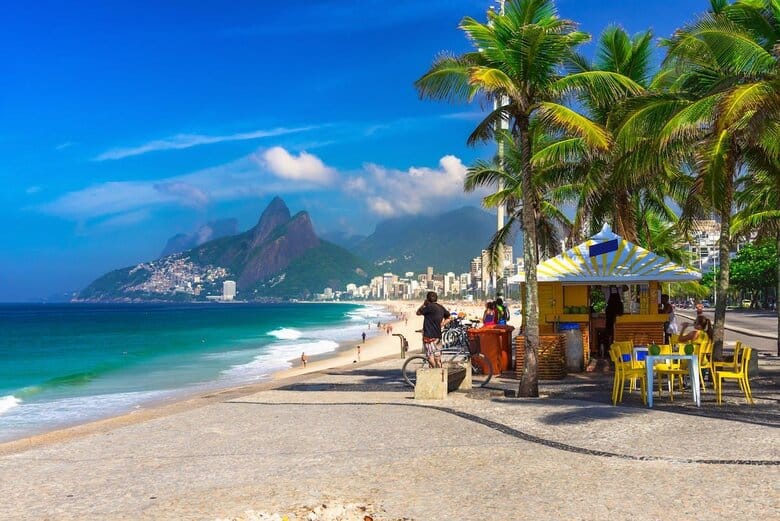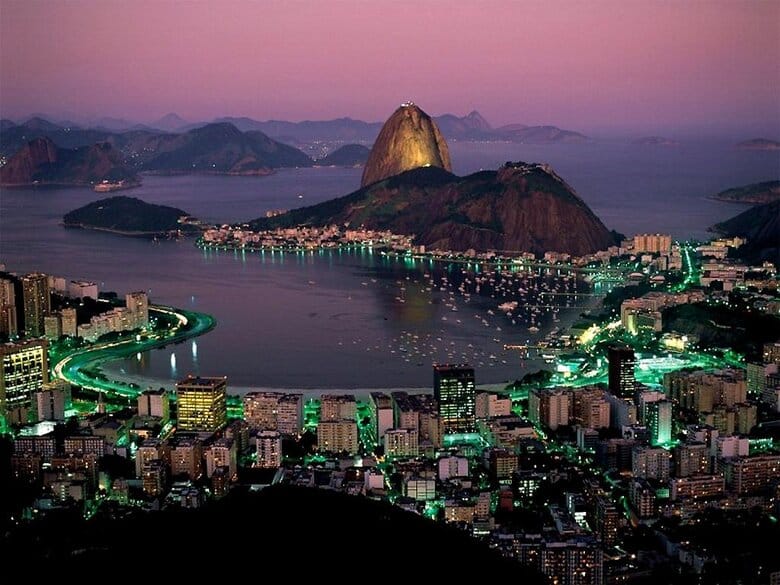
Brazil is a country located in South America, known for its rich history, diverse culture, beautiful beaches, and breathtaking landscapes. With a population of over 200 million people, Brazil is the fifth-largest country in the world in terms of land area and population.
History
Brazil’s history dates back to the indigenous tribes that inhabited the region before the arrival of the Portuguese in 1500. The Portuguese established a colony and brought African slaves to work on sugar cane plantations. Brazil gained independence from Portugal in 1822, and the country experienced a period of political instability and economic growth in the late 19th century.
In the early 20th century, Brazil became a republic, and in the 1930s, a military coup brought Getúlio Vargas to power. Brazil became a democracy in 1985, and since then, the country has experienced significant economic growth and political stability.
Geography
Brazil is the largest country in South America, covering an area of 8.5 million square kilometers. It is home to the Amazon rainforest, the largest and most biodiverse tropical rainforest in the world, and the Pantanal, the world’s largest wetland. Brazil has a long coastline that stretches over 7,000 kilometers, with numerous beaches and islands.
Population
Brazil has a diverse population, with people of European, African, and indigenous ancestry. The country’s official language is Portuguese, and Catholicism is the predominant religion. The population is concentrated in urban areas, with the largest cities being São Paulo, Rio de Janeiro, and Brasília.
Economy
Brazil has the ninth-largest economy in the world, with a Gross Domestic Product (GDP) of over $2 trillion. The country is a major exporter of agricultural products, such as soybeans, coffee, and beef, and has a well-developed manufacturing sector. Brazil is also a major producer of oil and has significant reserves of natural resources, such as iron ore and gold.
Political Country Division
Brazil is divided into 26 states and one federal district, which contains the capital city of Brasília. Each state has its own government and legislature, and the federal government is headed by the President. The country has a multi-party system, and the President is elected by popular vote for a four-year term.
Brazilian states: Acre, Alagoas, Amapá, Amazonas, Bahia, Ceará, Goiás, Espírito Santo, Maranhão, Mato Grosso, Mato Grosso do Sul, Minas Gerais, Para, Paraiba, Parana, Pernambuco, Piau, Rio de Janeiro, Rio Grande do Norte, Rio Grande do Sul, Rondônia, Roraima, São Paulo, Santa Catarina, Sergipe, Tocantins and the Federal District (Brasilia)
Best Places to Visit
Brazil has many beautiful places to visit, from the beaches of Rio de Janeiro to the Amazon rainforest. Some of the most popular tourist destinations include:
Rio de Janeiro – famous for its beaches, carnival celebrations, and iconic landmarks like the Christ the Redeemer statue.
São Paulo – Brazil’s largest city, known for its vibrant nightlife, museums, and cultural events.
Salvador – a historic city with colonial architecture, music, and cuisine influenced by African and indigenous cultures.
Florianópolis – a beach town on the island of Santa Catarina, known for its surf spots and natural beauty.
Foz do Iguaçu – a city located near the border with Argentina and Paraguay, home to the stunning Iguaçu Falls.
Here you can found an article about 8 paradisiac brazilian beaches to visit too.
Airports
Brazil has several major international airports, including:
São Paulo-Guarulhos International Airport – the busiest airport in Brazil, located in São Paulo.
Rio de Janeiro-Galeão International Airport – located in Rio de Janeiro and a major hub for flights to and from South America.
Brasília International Airport – located in the federal district and a hub for domestic flights.
Salvador International Airport – located in Salvador and a gateway to the northeast region of Brazil.
Confins International Airport – located in Belo Horizonte and a hub for flights to and from South America.
Official Language
Portuguese, although the Portuguese spoken in Brazil has an intonation and accent that differs from that spoken in Portugal. Spanish is being taught in Brazilian schools as a second language, the Brazilian government’s parliamentary decision in August 2005.

Climate
Brazil is a vast country that boasts a diverse climate and a population with a rich cultural heritage. The climate in Brazil varies depending on the region, with the country being home to several distinct climate zones.
In the Amazon region, the climate is tropical and humid, with heavy rainfall throughout the year. The coastal regions of Brazil have a tropical climate with high temperatures and rainfall, while the interior regions have a semi-arid climate with low rainfall and high temperatures.
Brazil’s population is a melting pot of different cultures and ethnicities, with a mix of European, African, and indigenous ancestry. The country has a population of over 200 million people, making it one of the most populous countries in the world. The majority of the population lives in urban areas, with the largest cities being São Paulo, Rio de Janeiro, and Brasília.
People
Brazilian people are known for their friendly and welcoming nature, with a culture that is rich in music, dance, and cuisine. The country is home to several famous musical styles, including samba, bossa nova, and forró, which reflect the diverse cultural influences of the country.
The cuisine of Brazil is also diverse and reflects the country’s multicultural heritage. Traditional Brazilian dishes include feijoada, a hearty stew made with black beans and meat, and churrasco, a type of barbecue that is popular throughout the country.
Brazil is also known for its love of sports, with football (soccer) being the most popular sport in the country. Brazilians are passionate about football, and the country has produced some of the world’s most famous players, including Pelé and Neymar.
Culture
The country’s culture is a reflection of its history, traditions, and beliefs, and it is expressed through music, dance, art, literature, and cuisine.
One of the most well-known aspects of Brazilian culture is its music. Brazil is home to a wide range of musical styles, including samba, bossa nova, forró, and frevo. Samba is perhaps the most famous Brazilian musical style and is closely associated with the country’s carnival celebrations. Bossa nova, on the other hand, is a more refined style of music that emerged in the 1950s and 1960s and is known for its smooth melodies and gentle rhythms. Forró is a popular style of music in the Northeastern region of Brazil, while frevo is a fast-paced and energetic style of music that is closely associated with the city of Recife.
Brazilian culture is also expressed through dance. Samba is not only a musical style but also a type of dance that is closely associated with the country’s carnival celebrations. Other popular Brazilian dances include forró, frevo, and capoeira. Capoeira is a martial art that was developed by enslaved Africans in Brazil and is known for its acrobatic moves and rhythmic music.
Art is another important aspect of Brazilian culture. The country is home to a vibrant art scene, with artists producing works that reflect the country’s history and cultural heritage. Brazilian art is diverse, ranging from indigenous art to contemporary works that push the boundaries of traditional artistic forms. Some of the most famous Brazilian artists include Candido Portinari, Tarsila do Amaral, and Beatriz Milhazes.
Brazilian literature is also rich and varied, with writers exploring themes such as love, loss, and identity. Some of the most famous Brazilian writers include Jorge Amado, Clarice Lispector, and Paulo Coelho. Brazilian literature is known for its vivid imagery, lyrical language, and exploration of the country’s cultural identity.
Cuisine is another important aspect of Brazilian culture. The country’s cuisine is a reflection of its diverse cultural heritage, with traditional dishes influenced by African, European, and indigenous cuisines. Some of the most famous Brazilian dishes include feijoada, a hearty stew made with black beans and meat, and churrasco, a type of barbecue that is popular throughout the country. Brazilian cuisine is also known for its use of exotic fruits and vegetables, such as acai berries and cassava.
Brazilian culture is diverse and multifaceted, with music, dance, art, literature, and cuisine reflecting the country’s rich cultural heritage. The warmth and hospitality of the Brazilian people, combined with the country’s vibrant culture, make it a fascinating destination for travelers who want to experience something truly unique.
In conclusion, Brazil is a fascinating country that offers a unique blend of history, culture, and natural beauty. Whether you’re interested in exploring the Amazon rainforest, relaxing on the beaches of Rio de Janeiro, or experiencing the vibrant nightlife of São Paulo, Brazil has something for everyone. With its growing economy, diverse population, and rich history, Brazil is definitely worth a visit.
Too you can found good information for to travel to Costa Rica in our blog about Central America & Caribe. If do you want more information contact us via Twitter. Thanks!


